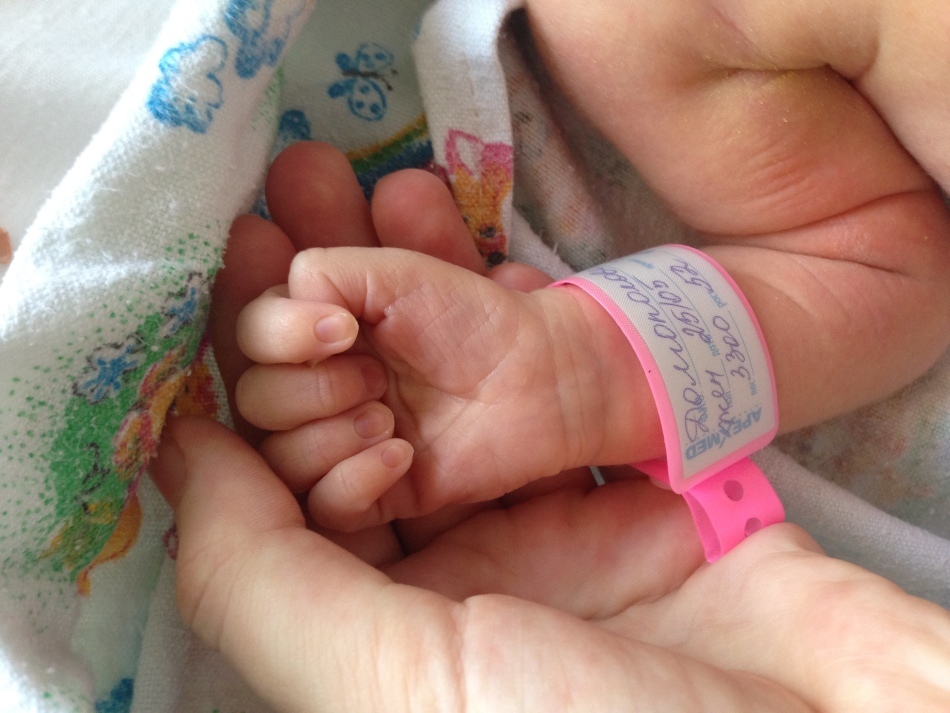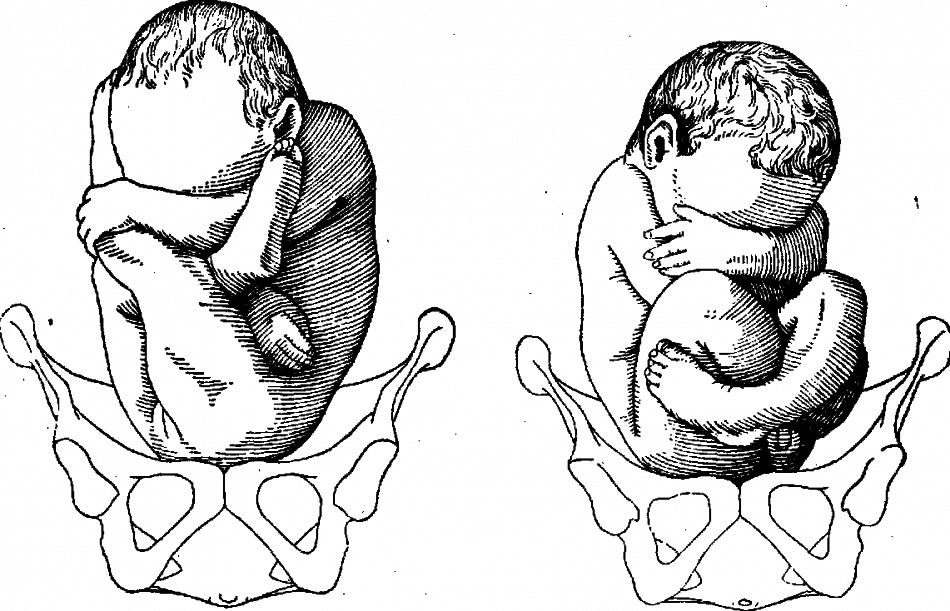Tactics of conducting birthing in a breech presentation. Ways to turn the baby in the mother's abdomen.
Contents
- What does the pelvic fetal presentation mean?
- What is dangerous for pelvic presentation of the fetus?
- Species of pelvic fetal presentation
- Pelvic breech presentation
- Pelvic fetal presentation
- Pelvic joint fetal presentation
- Pelvic fetal presentation: how to flip?
- VIDEO: External rotation of the fetus
- Exercise with breech presentation
- Breech delivery
- What to do with breech presentation: tips and feedback
- VIDEO: Births with pelvic fetal presentation
Many women look forward to the third ultrasound at 32 weeks. At this time, you can already determine with 100% probability, the sex of the child, look at his hands, legs.
Many pregnant women manage to capture how a baby sucks a finger and swallows an amniotic fluid. But the third ultrasound may have occasions for the disorder. A woman will know in what position her baby is relative to the birth canal. Not always the child presses his head against the mother's pelvis.
What is the fetal breech presentation?
This is the wrong position of the baby inside the uterus. In this case, the baby does not rest on the womb of a woman, but on a boot or knee. This situation significantly complicates the course of childbirth, because the child can not get out the booty ahead. In pelvic presentation, tongs and a caesarean section are often used.
 Pelvic presentation
Pelvic presentation What is dangerous for pelvic presentation of the fetus?
There are many dangers associated with pelvic presentation. First of all, it's not always possible for a pregnant woman to endure a baby and give birth on time. During pregnancy, the following complications are possible:
- Fetal hypopsy
- Placental insufficiency
- Gestosis
- Varicose in pregnant
- Defects of the heart and internal organs of the fetus
During labor, more difficulties may arise. Most often a woman is recommended a planned cesarean section. But the doctor carefully examines the maternity card and can recommend natural childbirth. It should be understood that the probability of birth injuries significantly increases.
Complications at delivery:
- Insufficient opening of the cervix, clamping of the head. The fetus can suffocate, since the legs are in the pelvis, and the head is still in the mother's abdomen. Generic ways of suffocating the baby. In this case, an episiotomy is shown - a cut of the perineum
- Prolonged and severe birth due to prolapse of the umbilical cord. The flow of nutrients does not come from overcompression. The child develops hypoxia
- Damage to the spine in the baby as a result of the doctors pulling him by the legs
- Possible fracture of the clavicle
 Complications of the breech presentation of the fetus
Complications of the breech presentation of the fetus Types of pelvic presentation of the fetus
There are several types of pelvic presentation:
- Gluteal. In this case the legs of the baby are directed along the body, and the heels are at the level of the head. It seems to be bent in half
- Foot. In this case the heels of the child rest against the mother's womb. During natural delivery the legs appear first
- Mixed. In this case, one leg of the baby is bent and presses on the birth canal, and the second leg is directed to the head or the priest and the legs are directed to the uterine throat.
All this is considered by the doctor when choosing the tactics of childbirth. The simplest is the breech presentation. In this case, there is a chance, with the proper course of labor, to get a healthy baby.
 Types of pelvic presentation of the fetus
Types of pelvic presentation of the fetus Pelvic breech presentation of the fetus
With breech presentation, baby booty presses against the mother's womb. During the natural childbirth, the baby's ass is born first. The child and leaves bent. In this case, after the birth of the trunk to the neck, the legs of the child straighten. And he literally hangs, stuck in the uterine ring. The most crucial moment is the birth of the head.
Usually, women are prescribed cesarean, especially if there are concomitant ailments. During breech presentation, there is a high risk of clamping the umbilical cord. The child can choke or suffocate inside.
 Pregnancy for breech presentation of the fetus
Pregnancy for breech presentation of the fetus Pelvic pediatric fistal presentation
In the case of leg presentation, caesarean section is required in almost 100% of cases. The difficulty lies in the fact that the soft and small legs quickly exit through the cervix to the outside. In this case, the opening is not sufficient to remove the head. A child can hang and suffocate for a long time between the insides of the mother and her vagina. Doctors recommend a planned cesarean section.
 Schematic representation of the fetus with a leg presentation
Schematic representation of the fetus with a leg presentation Pelvic joint presentation of the fetus
With a mixed presentation, also recommend cesarean. It occurs in 20% of cases of pelvic presentation. At the same time, the child squats squatting inside the mother. Often in the process of delivery passes into the true breech presentation, when the legs straighten.
 Caesarean section with mixed presentation of fetus
Caesarean section with mixed presentation of fetus Pelvic fetal presentation: how to turn?
There are several methods of turning the baby:
- In the hospital "external turn". Carried out by a doctor. The specialist by pressing and rotating the child
- with the help of gymnastics. There is a whole complex of exercises, in which the baby can turn over himself.
External turn is carried out in a hospital with a prepared operating room. A woman is doing ultrasound. After this, the doctor determines which way the fetus will be unfolded. A woman's belly is sprinkled with talc and seizing the baby's buttocks through the mother's belly unfolding it, gradually moving her head and ass. Manipulation should be carried out by a very experienced doctor. Otherwise, rupture of the fetal sac and premature birth may occur. The procedure is carried out at 37 weeks gestation.
VIDEO: External rotation of the fetus
Gymnastics with breech presentation of the fetus
If the period is short, up to 36 weeks, the baby can turn over in the abdomen. You must help him in this. To do this, perform special exercises that strengthen the vibration of the abdomen. Exercise is performed from the 29th week of pregnancy.
Exercises for pelvic presentation of the fetus:
- Bridge. You must lie on the floor, pressing your back firmly to it. Under the buttocks are cushions. Your hips should be 40 cm taller than your shoulders. You can put your knees on your husband's shoulders
- Birch. This is an ordinary and simple exercise, however, in a position with a big belly it is not easy to make it. Lie on the floor and lift your legs. Grab the pelvis with your hands and straighten your legs in your lap. Stand a little in this position
- Triangle. Stand beside the bed, with your feet on the bed. It is necessary that the knees touch the bed or sofa. Head with the hands on the floor. Thus, you make the bias of the body
All these exercises need to be repeated 2-3 times a day. They are aimed at shifting the baby's buttocks from the uterine throat. Thus, between the child's bosom and the booty space is formed, the baby will be able to roll over unchecked.
 Breech Exercise
Breech Exercise Births with breech presentation
Now about 80% of the births with pelvic presentation terminate in cesarean section. In this case, the tactics of conducting labor are chosen exclusively by the doctor. The mother's health and the type of pelvic presentation are taken into account.
The most beneficial can be considered a true breech presentation. Since the circle of priests and feet together is approximately equal to the circumference of the head. If the buttocks undergo a sufficient opening, the head should also leave the woman's bosom without hindrance. With foot and mixed presentation, in almost all cases, cesarean is used.
What to do with breech presentation: tips and feedback
- It is necessary to try, that the kid turned over in a stomach or belly itself. To do this, perform exercises and lead a healthy lifestyle.
- . If at 37 weeks your child is still in pelvic presentation, ask the gynecologist what hospital you can deploy the child with when pressing on the stomach
- Do not despair, consent to cesarean if insists on itexperienced specialist. Child's health above all
 Advice for breech presentation
Advice for breech presentation Be healthy and less nervous. Everything will be fine with your child.
